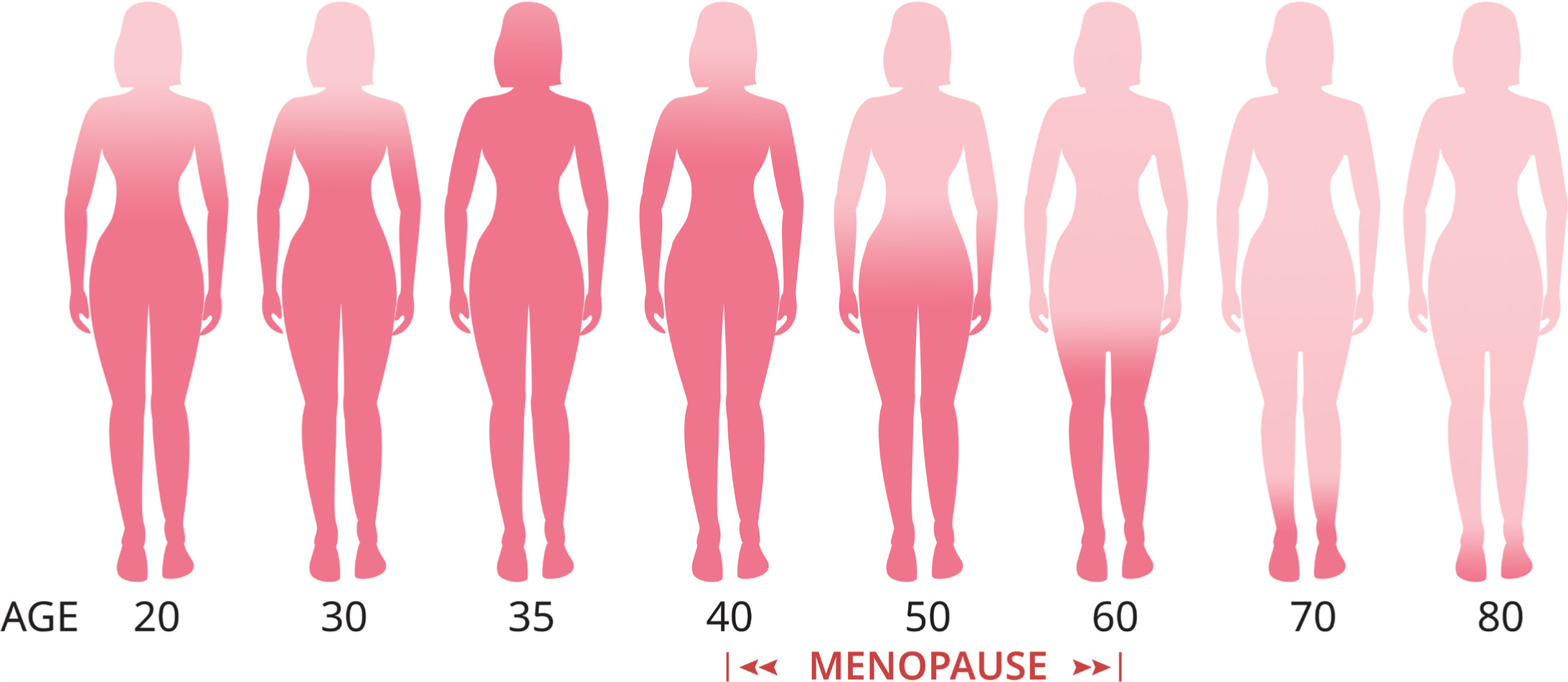
One of the body's largest organs (Raine-Fenning, 2003), the skin changes and is affected by both menopause and the ageing process. As the body grows older, so does the skin, but for some women, this can be accelerated around the time of the menopause by approximately 6% (Levine et al, 2016). As aesthetic procedures grow ever popular, more and more women visit aesthetic clinics for procedures to help with the ageing process initiated by menopause.
Menopause
Menopause is defined as the ‘permanent cessation of menstruation resulting from the loss of ovarian follicular activity’ (Sturdee, 2004). It can be a natural progression or can occur suddenly following surgery or medication. The term menopause originates from the Greek words ‘menos’ (which means ‘months’) and ‘pausos’ (meaning an ending). In the UK, on average, women experience menopause at 51 years' old (Abernethy, 2018).
There are various definitions associated with menopause. Some are detailed below, courtesy of the International Menopause Society (2019):
Usually, menopause occurs in women aged 45–55; however, it can also start earlier or later in a woman's life (Newsom, 2014). Menopause is associated with many symptoms, including hot flushes and night sweats (affecting approximately 75% of women), as well as vaginal dryness and sexual dysfunction (Hamoda et al, 2016).

Oestrogen and changes in the skin
During menopause, the loss of oestrogen (see Figure 1) leads to changes in the skin. The epidermis and dermis thickness reduces, while collagen and elastin levels are decreased. Such changes can lead to skin dryness, wrinkles and fragility, which, in turn, can increase skin trauma risk (Farage et al, 2017). Furthermore, these changes can cause some women to develop acne or rosacea.

Understanding the skin's anatomy
The skin is made up of two layers: the epidermis and dermis. The dermis is approximately 80% of the dry weight of skin and provides tensile strength to the dermis (Phuoung, 2017). There are at least 20 different types of collagen and the three most common are types I, II and III, the most common being type I (80%) and type III (15%) (Phuoung, 2017). While elastin only makes up 2–4% of the volume of the dermis, it has a central role, as it provides resilience and suppleness, allowing the skin to restore its initial shape after stretching (Walter et al, 2006). Various glycosaminoglycans, such as hyaluronic acid, which is a humectant (i.e. a compound able to bind water, which helps to maintain hydration), are contained in the skin. It is recognised that oestrogen has an influence on the skin through its effect on various cutaneous diseases; for example, the increased oestrogen levels during pregnancy can worsen atopic eczema, despite being associated with reducing the severity of psoriasis (Danesh et al, 2015).
During menopause, there are significant changes to the skin that are caused by the effects sustained on the skin's individual components (Raine-Fenning et al, 2003). Changes in the skin's basic components lead to an alteration in function compatible with skin ageing. Skin collagen changes lead to diminished elasticity and skin strength (Ebede et al, 2009).
Oestrogen and healthy skin
In 1941, the significance of oestrogen in maintaining healthy skin during menopause was discovered. It was observed that elderly women who had experienced an osteoporotic fracture had thin skin (Albright et al, 1941). Researched conducted later revealed how approximately 30% of dermal collagen was lost in the first 5 years post-menopause. Subsequently, levels continued to reduce at around 2% per year. (Brincat et al, 1985; Brincat et al, 1987). While collagen levels reduce naturally with age, it has been suggested that, in women, this is related to the low levels of oestrogen, rather than just ageing (Affinito et al, 1999). Furthermore, skin elasticity in post-menopausal women has been estimated to decrease at approximately 0.55% per year (Affinito P et al, 1999).
During this time, other changes in the skin can be witnessed, such as itching, redness and dryness, all of which can be unpleasant and uncomfortable. Another common symptom of menopause is drying of the vaginal membrane, also known as vaginal atrophy (North American Menopause Society, 2019). This occurs because of lack of oestrogen and can be very uncomfortable and painful for the patient.
Education about the menopause is crucial to helping women understand important changes to their bodies and reduce the symptoms (Durward, 2013).
Diet, skincare and menopause
Diet plays an important role in the relationship between the menopause and skin, as does drinking enough water (Lewin, 2013). While this will generally help the skin, it will also greatly help maintain the health of menopausal skin. Additionally, skincare products play a crucial role and should be tailored to the individual skin's need. Often, skincare products containing alcohol-based ingredients are too harsh for sensitive, thin or dry skin and can also cause an allergic reaction, so should be avoided (Paula's Choice, 2019). Many products are available that are marketed for menopause, but a good foundation for skincare products is antioxidants, vitamin C and vitamin A with SPF. In relation to treatments, less is more and, due to the thinning of the dermis, aesthetic practitioners need to be careful when devising a treatment plan.
The aesthetic practitioner's role
Aesthetic practitioners can offer advice and support on these skin changes and refer to dermatology when required or to a specialist that can prescribe hormone replacement therapy (HRT). While this is not an option for some women, it will be an option for most. One study found that HRT reduced skin slackness (Pierard et al, 1995). Another study, which used Premarin cream (0.625mg conjugated oestrogens) in women aged between 52–70 for 24 weeks, produced results showing significantly improved fine wrinkles (Creidi et al, 1994). A third study used HRT in women for at least 5 years and also produced improvements in skin elasticity with less pronounced wrinkling (Wolf et al, 2005).
Conclusion
Oestrogen depletion during menopause has a significant influence on skin. Oestrogen treatment in postmenopausal women has been repeatedly shown to increase collagen content, dermal thickness and elasticity, and data on the effect of oestrogen on skin water content are also promising. Furthermore, physiologic studies on oestrogen and wound healing suggest that hormone replacement therapy (HRT) may play a beneficial role.
Menopause is a time for change for women, but it does not have to be a change that most women dread or fear. As aesthetic nurses, by advising our patients on the best way forward to look after their skin, they can understand better the importance of managing their symptoms in conjunction with a healthy well-balanced diet and a good skincare regime to look good for the age they are while embracing menopause.


